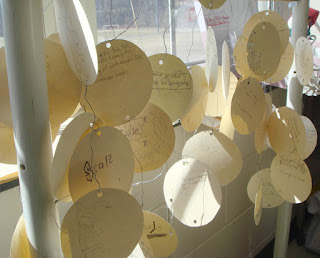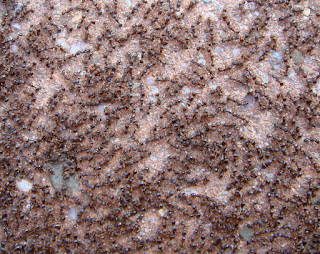
Collaborations between artists and scientists have yielded many intriguing projects over the past 20-plus years, as documented on the ASCI website. Having engaged in a fruitful art/science collaboration with Claire Beynon from 2005-8, the next step for our outreach program was to share this experience with elementary, middle, and high-school students. Enter the Capital Region Center for Arts in Education (CRCAE).
Based on our collaboration, artists Chris Moran and Pavlos Mayakis, together with poet Cara Benson, ran a CRCAE-sponsored art/science workshop for teachers last summer. This outreach project was recently put to the test: a classroom of bubbly bright 7th- and 8th-grade students in Holly May's English class at New Lebanon Junior/Senior High School were engaged in an art/science experience that explored the concept of scale. Expository writing was an essential ingredient of the program, providing another link between diverse curricula. Details will follow at the artscience alliance website; below are a few images to set the stage:




Thinking about Claire Beynon's interpretive artwork
 Writing observations
Writing observations


Dr. B, artist Chris Moran, and writing instructor Holly May











